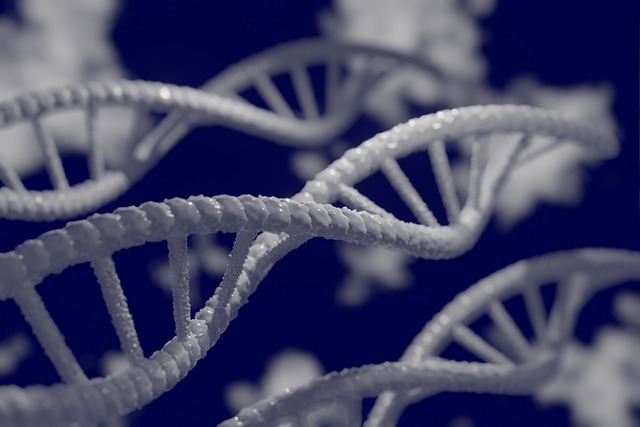Joint problems can be a source of significant discomfort and limitation for individuals. These problems can manifest in various forms such as arthritis, bursitis, tendonitis, and more. In this article, we will discuss joint health and some of the most common causes of joint problems.
1. Age and Joint Health

Ageing is a natural process that affects all aspects of the body, including the joints. Joint problems such as osteoarthritis, rheumatoid arthritis, and other conditions are commonly associated with ageing. As we age, the risk of developing joint problems increases, and this can have a significant impact on our quality of life.
One of the primary factors that contribute to joint problems in ageing is the wear and tear that occurs over time. The cushioning between the bones and joints in the body, known as cartilage, can wear down over time, resulting in joint pain, stiffness, and reduced mobility. This is particularly true for weight-bearing joints such as the hips and knees, which experience more wear and tear over time.
Additionally, ageing can also cause changes in the structure and composition of the joints themselves. The synovial fluid, which lubricates the joints, can become less effective as we age, resulting in increased friction and wear. The joints may also become less flexible and more prone to injury due to a decrease in the elasticity of the ligaments and tendons that support them.
Another factor that can contribute to joint issues in ageing is inflammation. As we age, the body’s immune system can become less efficient at controlling inflammation, which can lead to conditions such as osteoarthritis and rheumatoid arthritis. In these conditions, the body’s immune system mistakenly attacks the joints, causing inflammation and damage to the surrounding tissues.
Lifestyle Factors
In addition to these physiological changes, lifestyle factors can also contribute to joint problems in ageing. Excess weight, for example, can put additional strain on the joints, particularly those in the knees and hips, leading to increased wear and tear over time. A sedentary lifestyle can also contribute to joint issues, as it can result in weakened muscles and reduced flexibility.
Despite the increased risk of joint problems in ageing, there are steps that can be taken to minimise the risk and manage existing joint problems. Maintaining a healthy weight, engaging in regular exercise, and practising good posture and body mechanics can help to reduce the strain on the joints and improve overall joint health. In addition, there are a variety of treatment options available for those who are experiencing joint issues, including medications, physical therapy, and surgical interventions.
Summary
In summary, the link between ageing and joint problems is well established. As we age, the wear and tear on our joints, changes in joint structure and composition, and increased inflammation can all contribute to joint problems. However, by taking steps to maintain overall health and wellness and seeking appropriate treatment when necessary, it is possible to minimise the impact of joint problems on our quality of life in our later years.
2. Injuries and Joint Health

Joint problems are a common condition that can cause pain and discomfort for individuals. While ageing and other factors can contribute to joint problems, injuries are another major cause. Injuries to joints can lead to a variety of conditions such as arthritis, bursitis, and tendonitis.
Joint injuries are a common cause of joint problems. These injuries can occur due to sudden impact, repetitive motion, or overuse. Sports-related injuries, such as those that occur in cricket, rugby, or football, are a common cause of joint injuries. In addition, repetitive motion injuries, such as those sustained by musicians or factory workers, can also contribute to joint problems.
One of the most common injuries that can lead to joint issues is a sprain or strain. A sprain occurs when the ligaments, which connect bones to other bones, are stretched or torn. This can cause pain and swelling in the affected joint. A strain occurs when a muscle or tendon is stretched or torn, which can also cause pain and discomfort in the joint.
Another common joint injury that can lead to joint problems is a fracture or dislocation. These injuries occur when bones are broken or displaced, and can cause significant pain and damage to the surrounding tissues.
Cartilage Damage
In addition to the immediate impact of injuries on the joints, they can also lead to long-term joint problems. Injuries can cause damage to the cartilage, which can lead to conditions such as osteoarthritis. Over time, the damage to the cartilage can cause pain, stiffness, and reduced mobility in the affected joint.
In addition, injuries can also cause inflammation in the affected joint. This inflammation can lead to conditions such as bursitis and tendonitis, which can cause pain and swelling in the joint.
While injuries can contribute to joint issues, there are steps that can be taken to prevent them. This includes practising good body mechanics, warming up before physical activity, and wearing appropriate protective equipment. In addition, seeking prompt medical attention for joint injuries can help to minimise the risk of long-term joint problems.
Summary
Paraphrasing, injuries are a common cause of joint problems. Whether it is a sudden impact injury, repetitive motion injury, or overuse injury, damage to the joints can lead to a variety of conditions that cause pain and discomfort. While injuries cannot always be prevented, taking steps to prevent them and seeking appropriate medical attention when necessary can help to minimise the risk of long-term joint problems.
3. Obesity and Joint Health

Obesity is a growing problem in many countries, with millions of individuals affected by this condition. One of the significant health problems associated with obesity is joint problems. Obesity can increase the risk of developing joint issues such as osteoarthritis, rheumatoid arthritis, and other conditions.
The primary link between obesity and joint problems is the additional strain that excess body weight places on the joints. Every pound of excess weight places an additional four pounds of pressure on the knees. This means that an individual who is overweight or obese is placing significant strain on their joints with every step they take. Over time, this increased pressure can lead to joint damage, inflammation, and pain.
One of the most common joint problems associated with obesity is osteoarthritis. Osteoarthritis is a condition in which the cartilage that cushions the joints breaks down, leading to pain, stiffness, and reduced mobility. Obesity increases the risk of developing osteoarthritis, particularly in the knees and hips, due to the increased pressure on these joints.
Rheumatoid Arthritis
In addition to osteoarthritis, obesity can also increase the risk of developing other joint problems such as rheumatoid arthritis. Rheumatoid arthritis is an autoimmune disease in which the body’s immune system mistakenly attacks the joints, causing inflammation and damage. Obesity can contribute to the development of rheumatoid arthritis by increasing inflammation in the body.
Another way in which obesity can contribute to joint issues is through the production of cytokines. Cytokines are proteins that the body produces in response to inflammation. Excess body fat can increase the production of cytokines, leading to chronic inflammation throughout the body. This chronic inflammation can damage the joints, leading to conditions such as bursitis and tendonitis.
Despite the link between obesity and joint problems, there are steps that can be taken to manage or reduce the risk of joint problems. One of the most effective ways to reduce the risk of joint issues is to maintain a healthy weight through a combination of diet and exercise. Losing just a few pounds can significantly reduce the pressure on the joints, leading to reduced pain and inflammation.
Summary
So, the link between obesity and joint problems is well established. Excess body weight places significant strain on the joints, leading to an increased risk of developing conditions such as osteoarthritis and rheumatoid arthritis. By maintaining a healthy weight through diet and exercise, individuals can reduce the risk of joint problems and improve their overall health and quality of life.
4. Genetics and Joint Health

Joint problems can be caused by a variety of factors, including age, injuries, obesity, and genetics. While many people are aware of the first three factors, the role of genetics in joint issues is less well-known. However, research has shown that genetics can play a significant role in the development of joint problems, such as arthritis.
Arthritis is a group of conditions that cause inflammation and damage to the joints. There are several types of arthritis, including osteoarthritis, rheumatoid arthritis, and psoriatic arthritis, among others. While the exact cause of these conditions is not fully understood, it is clear that genetics can play a role.
Research has shown that certain genetic factors can increase the risk of developing arthritis. For example, variations in genes that control the immune system can contribute to the development of rheumatoid arthritis. Similarly, variations in genes that regulate the production of collagen can contribute to the development of osteoarthritis.
Severity of the Condition
In addition to contributing to the development of arthritis, genetics can also influence the severity of the condition. For example, some individuals may be more likely to experience joint damage or inflammation due to genetic factors. Others may be more resistant to the development of arthritis due to genetic factors that protect the joints.
While genetics can play a role in the development of joint problems, it is important to note that other factors can also contribute to these conditions. For example, age-related changes in the joints can lead to osteoarthritis, regardless of an individual’s genetic makeup. Similarly, injuries and obesity can also contribute to joint problems, regardless of genetic factors.
Despite the complex interplay between genetics and other factors in the development of joint issues, genetic testing may be helpful in identifying individuals who are at increased risk for these conditions. This can allow for early intervention and treatment to minimise the impact of joint problems.
Summary
In Summary, genetics can play a significant role in the development of joint problems such as arthritis. Variations in genes that regulate the immune system, collagen production, and other factors can contribute to the development and severity of these conditions. However, it is important to remember that other factors, such as age, injuries, and obesity, can also contribute to joint problems. By understanding the complex interplay between these factors, individuals can take steps to manage and reduce the impact of joint problems on their health and quality of life.
5. Infections and Joint Health

Infections are a common health concern that can affect various parts of the body, including the joints. Joint problems caused by infections are known as septic arthritis, and they can cause significant pain, inflammation, and damage to the affected joint.
Septic arthritis is caused by an infection that has spread to the joint, either through the bloodstream or directly through an injury or surgical procedure. Bacteria are the most common cause of septic arthritis, but viruses and fungi can also be responsible. The infection leads to inflammation of the joint, which can cause pain, swelling, and stiffness. If left untreated, septic arthritis can cause permanent damage to the joint and surrounding tissues.
The link between infections and joint problems is multifaceted. Infections can cause joint problems through various mechanisms. For example, some infections can directly damage the joint and surrounding tissues. Bacteria can produce toxins that destroy cartilage and bone, leading to joint damage. Similarly, viruses can cause inflammation of the joint, leading to pain and stiffness.
Autoimmune Response
Infections can also contribute to joint problems by triggering an autoimmune response. An autoimmune response occurs when the body’s immune system mistakenly attacks its own tissues. In the case of septic arthritis, the immune system may attack the joint tissue in response to the infection, leading to further damage and inflammation.
Certain populations are at increased risk of developing septic arthritis. Individuals with weakened immune systems, such as those with HIV or cancer, are more susceptible to infections that can lead to joint problems. Similarly, individuals with diabetes or rheumatoid arthritis may be more likely to develop septic arthritis due to underlying health conditions that affect their immune system or joint health.
Summary
Paraphrasing, infections can lead to joint problems such as septic arthritis through various mechanisms, including direct damage to the joint, inflammation, and autoimmune responses. It is important to be aware of the risk factors for septic arthritis, such as weakened immune systems, diabetes, and rheumatoid arthritis. If an infection is suspected, prompt treatment is essential to minimise the risk of joint damage and improve outcomes. By understanding the link between infections and joint problems, individuals can take steps to protect their joint health and overall well-being.
6. Autoimmune Disorders and Joint Health

Autoimmune disorders are a group of conditions that occur when the body’s immune system mistakenly attacks its own tissues. There are many different types of autoimmune disorders, including rheumatoid arthritis, lupus, and psoriatic arthritis, among others. These conditions can affect various parts of the body, including the joints, and can lead to significant pain, inflammation, and damage.
Autoimmune disorders can lead to joint problems through various mechanisms. In rheumatoid arthritis, for example, the immune system attacks the synovium, which is the lining of the joint. This leads to inflammation, pain, and damage to the joint tissue. Over time, the damage can become irreversible, leading to disability and reduced quality of life.
In other autoimmune disorders, such as lupus, joint problems can occur due to inflammation throughout the body. The immune system attacks various tissues, including the joints, leading to pain, swelling, and stiffness. These symptoms can be severe and can significantly impact an individual’s daily life.
Septic Arthritis
Autoimmune disorders can also contribute to joint problems by increasing the risk of other conditions. For example, individuals with autoimmune disorders may be more likely to develop osteoporosis, which can increase the risk of fractures and other joint problems. Similarly, individuals with autoimmune disorders may be more susceptible to infections, which can lead to septic arthritis and other joint problems.
The link between autoimmune disorders and joint problems is complex and multifaceted. However, there are steps that individuals with autoimmune disorders can take to minimise the impact of joint problems on their health and well-being. These include working with healthcare professionals to develop a treatment plan, engaging in regular exercise to improve joint mobility and strength, and managing other health conditions that can contribute to joint problems.
Summary
To summarise, autoimmune disorders can lead to joint problems through various mechanisms, including inflammation, damage to joint tissue, and increased risk of other conditions. The impact of these conditions can be significant, leading to pain, disability, and reduced quality of life. However, with appropriate treatment and management, individuals with autoimmune disorders can take steps to protect their joint health and overall well-being. By understanding the link between autoimmune disorders and joint problems, individuals can work with healthcare professionals to develop a comprehensive plan for managing these conditions and maintaining optimal health.
7. Poor Posture and Joint Health

Poor posture is a common problem that can lead to various health concerns, including joint issues. Posture refers to the alignment of the body, including the spine, shoulders, hips, and other joints. When posture is poor, it can lead to muscle imbalances, joint misalignments, and other issues that can cause pain and discomfort.
One of the most common joint problems associated with poor posture is back pain. When the spine is not properly aligned, it can put pressure on the joints and surrounding tissues, leading to pain and discomfort. Similarly, poor posture can lead to shoulder and neck pain, as the muscles in these areas can become tight and strained.
Pain and Stiffness
Poor posture can also lead to joint problems in the hips, knees, and ankles. When the body is not aligned properly, it can cause imbalances in the muscles and joints, which can lead to wear and tear over time. This can increase the risk of conditions such as osteoarthritis, which is a common joint condition that occurs when the cartilage in the joint wears away, leading to pain and stiffness.
Another way that poor posture can contribute to joint problems is by reducing joint mobility. When the joints are not properly aligned, they can become stiff and restricted, which can make it difficult to perform daily activities. Over time, this can lead to further joint damage and pain.
Fortunately, there are steps that individuals can take to improve their posture and minimise the risk of joint issues. These include engaging in regular exercise to strengthen the muscles and improve joint mobility, practising good ergonomics in the workplace, and using supportive footwear and other accessories to promote proper alignment.
Summary
So, poor posture can contribute to joint problems through various mechanisms, including muscle imbalances, joint misalignments, and reduced joint mobility. The impact of these conditions can be significant, leading to pain, discomfort, and reduced quality of life. However, with appropriate management and intervention, individuals can take steps to improve their posture and protect their joint health. By understanding the link between poor posture and joint problems, individuals can work with healthcare professionals and other experts to develop a comprehensive plan for improving posture and promoting overall health and well-being.
8. Occupational Hazards and Joint Health

Occupational hazards refer to conditions in the workplace that can lead to injury, illness, or other health concerns. Many occupational hazards can contribute to joint problems, including repetitive motion, heavy lifting, and exposure to vibrations, among others.
Repetitive motion is a common occupational hazard that can lead to joint problems. When an individual performs the same motion repeatedly over time, it can lead to strain and damage to the joints and surrounding tissues. This can increase the risk of conditions such as carpal tunnel syndrome, which is a common condition that occurs when the median nerve in the wrist becomes compressed, leading to pain, numbness, and weakness in the hand.
Heavy lifting is another occupational hazard that can contribute to joint issues. When an individual lifts heavy objects, it can put pressure on the joints and surrounding tissues, leading to strain and damage over time. This can increase the risk of conditions such as herniated discs, which is a common condition that occurs when the soft tissue in the spine becomes displaced, leading to pain and discomfort.
Exposure to Vibrations
Exposure to vibrations is another occupational hazard that can contribute to joint problems. When an individual is exposed to vibrations for extended periods, it can cause damage to the joints and surrounding tissues, leading to pain and discomfort. This can increase the risk of conditions such as hand-arm vibration syndrome, which is a condition that occurs when the nerves and blood vessels in the hands and arms become damaged, leading to pain, numbness, and other symptoms.
Other occupational hazards that can contribute to joint problems include working in awkward positions, exposure to chemicals, and prolonged standing or sitting. These conditions can lead to strain and damage to the joints and surrounding tissues, increasing the risk of joint problems over time.
Fortunately, there are steps that individuals and employers can take to minimise the risk of occupational hazards and protect joint health. These include providing ergonomic equipment and tools to minimise strain and promote proper alignment, offering training and education to employees to promote safe working practices, and encouraging regular breaks and stretching to minimise the impact of repetitive motion and prolonged standing or sitting.
Summary
To summarise, occupational hazards can contribute to joint issues through various mechanisms, including repetitive motion, heavy lifting, and exposure to vibrations, among others. The impact of these conditions can be significant, leading to pain, discomfort, and reduced quality of life. However, with appropriate management and intervention, individuals and employers can take steps to minimise the risk of occupational hazards and protect joint health. By understanding the link between occupational hazards and joint problems, individuals can work with healthcare professionals and other experts to develop a comprehensive plan for promoting joint health and overall well-being in the workplace.
Wrapping It All Up
In conclusion, joint problems can be caused by a variety of factors, including age-related wear and tear, injuries, obesity, genetics, infections, autoimmune disorders, poor posture and alignment, and occupational hazards. While some of these factors are beyond our control, there are steps we can take to minimise our risk of developing joint problems, such as maintaining a healthy weight, practising good posture, and avoiding activities that put excessive strain on our joints. If you are experiencing joint pain or other symptoms, it is important to consult with a healthcare professional to determine the cause and develop an appropriate treatment plan.
Read More
- 3 Reasons Going to Bed Hungry Is Not a Terrible Idea
- The Connection Between Manifestation and Gratitude
- Manifestation – Universal Energy, Visualisation, and Gratitude
- The Power of Having a Positive Mental Attitude
- Gynecomastia – The Causes, Symptoms, and Treatments
Disclaimer: The information provided on Healthy Lifestyles for All is intended for general educational purposes only and should not be considered as medical advice. Please consult with your GP or other health professional before making any significant changes to your diet, exercise routine, or any other aspect of your lifestyle. We are not responsible for any adverse effects or consequences resulting from the use of the information provided on our blog.
Comments: I hope you enjoyed reading this post as much as I enjoyed writing it. If you liked it, please leave a comment. If you didn’t like it, disagree with something I have written (I’m okay with that), or think I got something wrong (that’s okay too), please leave a comment as well. We only truly learn from our mistakes, so I am happy to have mine pointed out.
Affiliate Links: Please also note that I may make a small amount of money if you buy one of the products I recommend in any of my blog posts. Rest assured that I have done my own due diligence, and only recommend products that have been tried and tested, and have extremely good feedback. Additionally, many of the products I recommend have 30 or 60-day money-back guarantees, so you can buy in the confidence that if a particular product is not right for you, you can get a refund.

